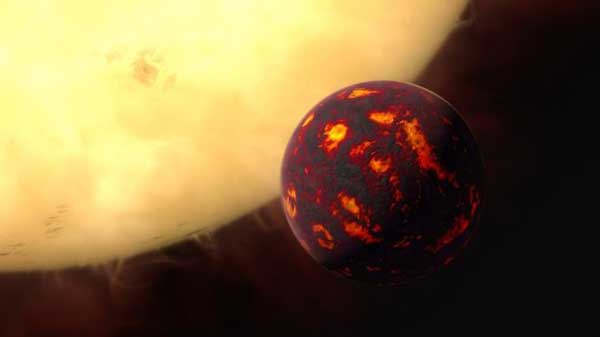
London, UK (BBN)-For the first time, astronomers have managed a direct measurement of the gases present on a "super-Earth" planet orbiting an alien star.
They found evidence for hydrogen and helium in its atmosphere, but no water, reports BBC.
Called 55 Cancri e, the world is twice the size of Earth and eight times the mass - but orbits unusually close to its host star, with an 18-hour year and surface temperatures above 2,000C.
The UK team published their findings in the Astrophysical Journal.
"This is a very exciting result because it's the first time that we have been able to find the spectral fingerprints that show the gases present in the atmosphere of a super-Earth," said Angelos Tsiaras, a PhD student at University College London and the first author of the paper.
"Our analysis of 55 Cancri e's atmosphere suggests that the planet has managed to cling on to a significant amount of hydrogen and helium from the nebula from which it formed."
Astronomers believe super-Earths are the most abundant planets in our galaxy.
The term describes any world heavier than Earth but not as massive as gas giants like Saturn and Jupiter.
With its very close orbit, 55 Cancri e is a particularly exotic example.
As with all extrasolar planets, or "exoplanets", the evidence for its existence comes from tell-tale, regular dips in the brightness of its host sun, 55 Cancri.
This star is 40 light-years away and extremely bright; it is also known as Copernicus and forms part of the Cancer constellation.
When a planet like 55 Cancri e makes a transit in front of its star, it typically blocks about 1 per cent of the star's light - and this happens across all the colours of light.
"The entire planet has a signal that doesn't depend on wavelength; it's just a solid body that is blocking the light," explained Prof Giovanna Tinetti, a study co-author also from UCL.
But if the planet has an atmosphere, its "fingerprint" can be detected in how the transit affects different wavelengths, as the gases filter the star's light.
These signals are much smaller, dimming the star by as little as 0.001 per cent.
Researchers studying super-Earths have never detected such a fingerprint before.
BBN/SK/AD